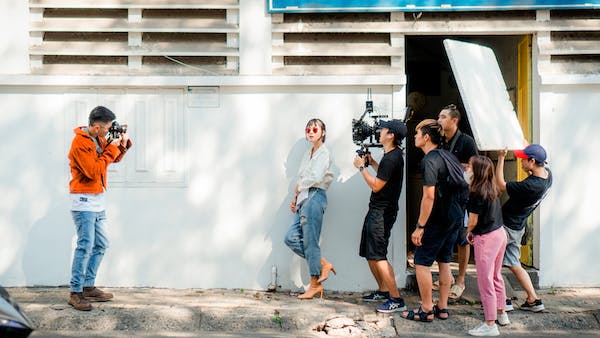Who owns the copyright if a monkey snaps on your phone?
Slater had been photographing endangered monkeys and left his camera unattended. The monkey was fascinated by the reflection of the camera and the sound it made when it accidentally snapped a picture. It took hundreds of photos of itself. The majority of photos were blurry and out-of-focus, but a few produced unique and up-close self-portraits.
Slater is now embroiled in a dispute over the images with Wikimedia. This organization, which runs the Wikipedia online encyclopedia, has not given Slater’s permission to use the photos. Wikimedia made the images online as part of its collection of royalty-free pictures without Slater’s permission. The company argues that Slater doesn’t own the rights to the photos because he didn’t take them. They believe that the copyright belongs either to the monkey or no one.
Slater wants the images taken down or compensation for their usage. He claims that he owns the photos because he was the one who took the pictures and initiated the situation.
It is yet another example of how digital photography has created circumstances that were not anticipated by those who set the rules. In fact, the law is largely silent about who owns copyrights for works not made directly by humans.
There is one clear thing. The UK Copyright Designs and Patents Act 1998 (CDPA) states that an author is the creator of the work. A monkey, which is not considered a person in UK law, cannot be an owner or author of the images.
I am an artist. Wikimedia
Does this mean that David Slater could be, even though he didn’t take the photos, if the monkey can’t be legally classified as an author or owner? It’s not a question of whether David Slater has the right to assign copyrights under UK law. The real issue is whether copyrights exist at all. Three main legal arguments are relevant.
First, there may be no copyright owner for the photos because no “person” has taken the pictures. This conclusion, however, undermines the UK copyright laws’ key purpose – to make valuable, interesting, and useful works readily available to the general public. Photographers who are in a similar situation in the future might not feel protected, and they may even be discouraged from publishing their photos.
In the case at hand, if it were decided that the camera owner owned the intellectual property created, future photographers would be encouraged to continue to experiment and publish their work. This would increase the chances of producing and distributing interesting works.
A second option would be to consult the CDPA’s section on computer-generated work. The CDPA states that the author of a literary work, a dramatic work, a musical work, or an artistic work that is created by a computer is the one who makes the necessary arrangements for the work. This could be the computer programmer, for instance.
The act does not mention animal-generated work, but it is plausible to argue that an owner who has taken his camera out into nature, let an animal handle it, then recovered it and downloaded the images is more likely to be entitled to copyright than an entity that is unaware of its creative role. Animal-generated photographs should not be treated differently from machine-generated images.
It is important to distinguish this from situations where animals create art consciously by painting or making marks, as there is no way that the monkey could have known that by pressing the button accidentally, it produced a photo.
Slater’s intellectual creativity is also demonstrated by any changes made to photographs after the fact, like cropping or filtering. The edited versions of pictures will have a different copyright than the originals.
The UK and US laws do not allow for the idea that a monkey is the owner of the images.
Slater’s position under UK law may be a bit ambiguous if the images placed on Wikimedia’s website are “originals” and unedited. However, there are sound public policy reasons for giving him the ownership of the copyright. Otherwise, it is less likely that photos of this kind will ever be made public.
One final point has been missed in the discussion, and it highlights a grey area that continues to exist in Internet copyright disputes. UK and US copyright laws differ significantly on certain key issues. Slater, a UK national, is likely to base his claim of ownership on UK copyright laws. Wikimedia, an American charitable and non-profit organization with headquarters in San Francisco, California, appears to establish its claim on US law.
What may be at stake is not only the ownership dispute of a monkey selfie’s copyright but the willingness of US media organizations to continue to seek to legitimize their international internet activities through a US-centric copyright interpretation, regardless of rights granted and wishes of authors and creators from other countries.



